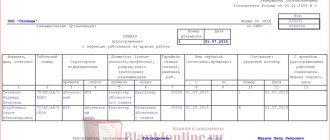Who can be transferred to remote work?
Representatives of not all professions can be “removed.” But the global “exodus from the office” has already begun in engineering, sales, finance, design, journalism, programming, additional education, logistics management and other areas. If 3/4 of an employee’s functionality does not require his physical presence, you can think about new work formats.
Transferring employees to remote work must be done rationally and legally.
First of all, it is necessary to distinguish between three situations:
- Freelancing (a specialist freely offers his services to many customers on the market). As a rule, it is not formalized in an employment contract. One-time services are provided. You can use the formats of a civil contract (CLC), or self-employment.
- A completely remote employee who initially does not undertake any obligation to be on the employer’s premises (their work is regulated by Article 312 of the Labor Code of the Russian Federation).
- Temporary or partial transfer of previously hired employees to remote work.
Temporary transfers are not yet regulated by law, which creates the ground for mutual distrust between the employee and the employer. But in light of current events in March 2021, deputies accelerated the consideration of amendments to the Labor Code. It is planned to introduce the concepts of “part-time remote employment mode” and “temporary remote work”. Of course, the time has come for such options!
In the first case, a flexible combination of “full-time” and “correspondence” employment is meant in a format that suits the employee and the employer. Let's say a specialist valuable to the company moves to live in the suburbs. It can be set to 4 days remote + 1 day in the office (or any other option that suits both sides of the labor relationship).
In the second case, a temporary transfer of employees to remote work is provided if any circumstances require it (from an epidemic to painting the walls).
Until changes have been made to the labor code, the employer can rely on the provisions of Article 312, and additionally take into account the Recommendations of Rostrud in the form of questions and answers dated March 23, 2020 as a precedent in the preparation of legislative reinforcement of the norms https://rosmintrud.ru.
Is the employee's consent required to transfer to remote work?
Of course, the transition to remote work is possible only with the voluntary informed consent of the employee:
- If an employment contract is initially concluded with an employee on the basis of Article 312 of the Labor Code of the Russian Federation, then it states that labor functions will be performed remotely, that is, outside the location of the company, and interaction with the employer will be carried out via telecommunication networks. Read more about hiring remote workers in this article.
- If an employee is transferred to remote work temporarily or partially, a written statement about this is required.
Forcing a person officially hired for “full-time” work to change the place where he performs his labor function is fraught. This may be interpreted as a deterioration in the terms of the employment contract. In case of employee complaints, the court and labor inspectorate will side with the employee.
Also, it is impossible to reduce the remuneration of an employee remotely compared to what is written in the TD and/or regulations on remuneration.
What do we put on the report card?
From March 30, 2021, a transfer can be completed electronically , and documents can be signed on paper later – after restrictions are lifted. This is enshrined in Art. 72 of the Labor Code of the Russian Federation, and also explained in the letter of the Ministry of Labor dated March 27, 2020 No. 14-4/10/P-2741 and in the clarifications of the Ministry of Labor posted on the website https://rosmintrud.ru.
Keep timesheets for employees transferred to remote work as usual . That is, days when the employee works remotely (at home, etc.), o or code “ 01 ”. If you use your own designations, then use them.
How to properly arrange a transfer to remote work?
If there is a desire or need to transfer to remote work an employee with whom an agreement has already been concluded on a general basis, then you must adhere to the following algorithm:
- Receive a personal statement from the employee that he wants to change working conditions, indicate the date on which the transition will take place, register the document, and impose a resolution.
- Prepare an additional agreement to the employment contract from this date.
- Additional provisions agreements are discussed and signed with the employee. He is given his copy of the document. If the organization has a trade union or other collective body, then the changes are agreed upon with it.
- Issue an order to change working conditions.
- The employee is given a new instruction on health and safety, which is recorded in the instruction book.
- The employee is given safety instructions when using equipment to perform his or her job functions.
- If the position has not changed, there is no need to display the transition to remote work in the work book.
- When transferring any equipment to an employee to perform work functions, an individual liability agreement may be concluded with him. But you can limit yourself to the act of acceptance and transfer.
- If necessary, the employee is given signed instructions on the use of information security tools and the preservation of confidential information.
- Time sheets and schedules for employees continue to be filled out without changes.
We are writing a statement
The application is written in any form. You can write by hand or type on a computer; it is important that the signature on it is “live.”
What you need to indicate:
- position and full name of the employer;
- position and full name of the employee;
- grounds for transfer to distance learning;
- request for transfer;
- the date from which the transition is planned;
- nature of the transfer: temporary or permanent;
- date and signature.
Once the application is ready, it is submitted to the employer, who, in turn, issues a visa on it. Next, the application must be registered in the application log.
Sample
To the General Director of Vostorg LLC from web designer Maria Ivanovna Shishkina
Statement
In connection with the move to a new place of residence, I ask you to transfer me to a remote form of work with full retention of labor functions from December 1, 2021.
Date: November 27, 2021
Signature: Shishkina / M.I. Shishkina
Is it possible to transfer an employee to remote work temporarily?
Although there is no such norm in the Labor Code yet, nothing contradicts the possibility of using remote work temporarily. To do this you need to take the following steps:
- Hold a team meeting to explain the reason for the transition to remote work and the procedure for interactions in this mode.
- Collect statements of those who agree with the translation.
Further, all points will coincide with those indicated in the previous section of the article. The only difference between the additional agreement and the order is the indication that the employee is not transferred to remote work forever, but for a certain period of time, that is, temporarily.
You can specify the option: “with…. until further notice." In this case, the employee must receive notification three working days in advance that he is being called back to “full-time” work. The date of release must be reflected in the order (“Economist A.A. Ivanov, from April 15, 2021, to begin performing his labor duties on the employer’s territory ... at the address ...”).
If you specify an exact time frame, then another additional agreement may be needed to extend the period of remote work.
Important!
Employees who refuse to write an application for remote work cannot be forced to do so. If the employer cannot provide them with the working conditions specified in the employment contract, then he must pay them for forced downtime at the rate of 2/3 of the salary. Let’s say they break down the walls in the office, 5 people agree to take work home, and 3 don’t. The latter will have to pay two-thirds of the salary. Forcing them to take a vacation at their own expense or insist on remote work is dangerous (sanctions from the labor inspectorate, the prosecutor’s office and the court are possible).
How to prepare documents for transfer to remote work?
The document flow associated with remote work has its own nuances. They must be taken into account when preparing the translation.
How is an employee’s application for transfer to remote work completed?
The application is written in person and addressed to the head of the organization. Below is a sample wording that you can use:
“I ask you to allow me to perform my job duties (employment contract No. 18 dated September 14, 2009) remotely outside the location of Parus LLC with interaction through public information and communication networks from May 21, 2021.”
The following is indicated - permanently or for a limited period of time.
What changes need to be made to the employment contract?
An additional agreement is concluded to the current employment contract.
The place of conclusion of the document will be the address of the company, but it is indicated that further labor functions will be performed without presence on the territory of the employer. It is not specified where the employee will work. There is no need to write, for example, the employee’s home address as the place of performance of work functions. It is important to clarify that the obligation to be present at a stationary workplace on the employer’s premises is completely lifted or partially (for example, appearing 2 times a month on Fridays).
The work schedule can be left as it was. If remote workers and their employer live in different time zones, then it is specified what time the start and end of the working day are indicated at.
The additional agreement notes that the employer now bears responsibility for the labor protection of a remote employee only in terms of paragraphs 17, 20 and 21 of Part 2 of Art. 212 Labor Code of the Russian Federation.
The most important thing is to describe in detail the methods of interaction:
- Types of communication (with numbers and addresses).
- The method of issuing a task and obtaining work results.
- Contact time.
- Response times.
- Forms of participation in team work (for example, a conference on Skype or a chat in the messenger).
Important!
If an employer insists on using any paid program for communication or work, then he pays for it. There are judicial precedents for decisions in favor of workers. Otherwise, paragraph 3 of Article 312 of the Labor Code of the Russian Federation refers to the provision of material and technical means to the sphere of voluntary agreements between the employee and the employer.
The additional agreement on the transition to remote work must indicate how documents on the organization of work will be exchanged (applications, orders, sick leave, notifications). The law allows you to do this both electronically and by Russian Post in paper form. Including starting from 2021, you can keep a work record book electronically.
How to issue an order to transfer to remote work?
There is no single form of order. But since Rostrud in its explanations refers specifically to the additional agreement to the TD, we can recommend the following wording as an example:
“... on the basis of a personal application and agreement reached (additional agreement No. 1 of March 12, 2021 to employment contract No. 158 of September 16, 2021) transfer to remote work permanently from March 12, 2021” (or indicate a period).
Situations when remote dismissal is possible
The procedure for dismissal at the initiative of an employee is established by labor legislation, namely Art. 80 Labor Code of the Russian Federation.
This article states that a subordinate can terminate relations with the employer in this way under the following conditions:
- written notification of this (by drawing up an application);
- compliance with the established two-week notice period for dismissal.
However, in some cases the period may be less than two weeks. Therefore, the only important condition is to warn management about the upcoming termination of the employment contract.
At the same time, there are no requirements for the employee to submit an application in person - this can be done in another way, that is, remotely.
Factors of dismissal
The need for this method of dismissal may arise under the influence of various factors, for example:
Territorial
As you know, an employee can resign at any time convenient for him, be it vacation or sick leave. If, during vacation or illness, he is far from the employer’s location (in another city, region) without the opportunity to quickly come, remote dismissal will be the only possible option for him.
Temporal
Obviously, the remote method is much simpler and faster in time - just write an application and send it by mail. There is no need to go to the manager or visit the HR department. This is especially convenient if the employee has already found a new place and is undergoing training or internship there, which requires constant presence in the new place.
Personal
This situation is possible if the dismissal occurs for personal reasons - for example, in the event of a conflict with management or colleagues. By submitting an application remotely, the employee will be deprived of the need to once again visit his previous workplace.
The employee has the right to send an application by mail in any case, regardless of whether he has serious grounds. The only requirement is compliance with the established dismissal procedure.
Tips for employers
- Before “removing” employees, talk and clarify their living circumstances. A case from practice: a woman wrote an application to switch to remote work during the epidemic, committing to work on her home computer. Then it turned out that her husband and children were taken remotely.
- If possible, make the transition gradually or give several hours - a day to set up a workplace, set up software, etc.
- “Strain” the technical support service (if you have one): not all employees understand what their computer can handle and what programs are on it. Through the TeamViewer
you can remotely help them set up the software. - Provide the necessary equipment if necessary. To do this, it is enough to issue an act or a simple receipt of receipt.
- In the vast majority of cases, simple and free tools are sufficient for team work, electronic document management and effective interaction: a shared folder in the cloud, documents on Google Drive, Skype, WhatsApp and similar programs. You can also use useful collaboration programs and CRM systems.
- Determine a rational way to quickly communicate: it is often more convenient not to immediately dial an employee’s phone number, but to send him a special sign in the messenger, implying that you are expecting a call from him within 10 minutes.
- Control the results (intermediate and final), and not the processes and conditions for obtaining them.
- Remember - support for corporate culture, team spirit, and non-material motivation for work has not been canceled! Communication, encouragement, inspiration, “trademark” humor, feedback are appropriate (and very necessary!) remotely!
In this article, we figured out how you can transfer an employee to remote work and what documents need to be completed. As you can see, there are nuances in the legislation that are important to consider. This article will help you correctly prepare all documents and adapt processes in the company.
Author: Kadrof.ru (KadrofID: 79032) Added: 03/27/2020 at 15:31
To favorites
Comments (0)
Salary and taxes
Just like a regular employee, a remote worker’s salary depends on the minimum wage, and a regional coefficient is added on top of it. Moreover, the coefficient of the area in which he lives and works is taken, and not the one where you are located. So, if you hire an employee living, for example, in Norilsk, you will have to pay him much more.
Taxes and contributions are paid on the salary of remote workers in the same way as for regular employees. But there is an important exception: if you hire a foreigner, and he works for you without leaving his country, you do not need to pay personal income tax or fees for him, and he will work under a GPC agreement.










